Freestanding or fitted kitchens: Which one should you choose?
Kitchen design is usually classed as freestanding or fitted. Is one better than the other or can they reside together?
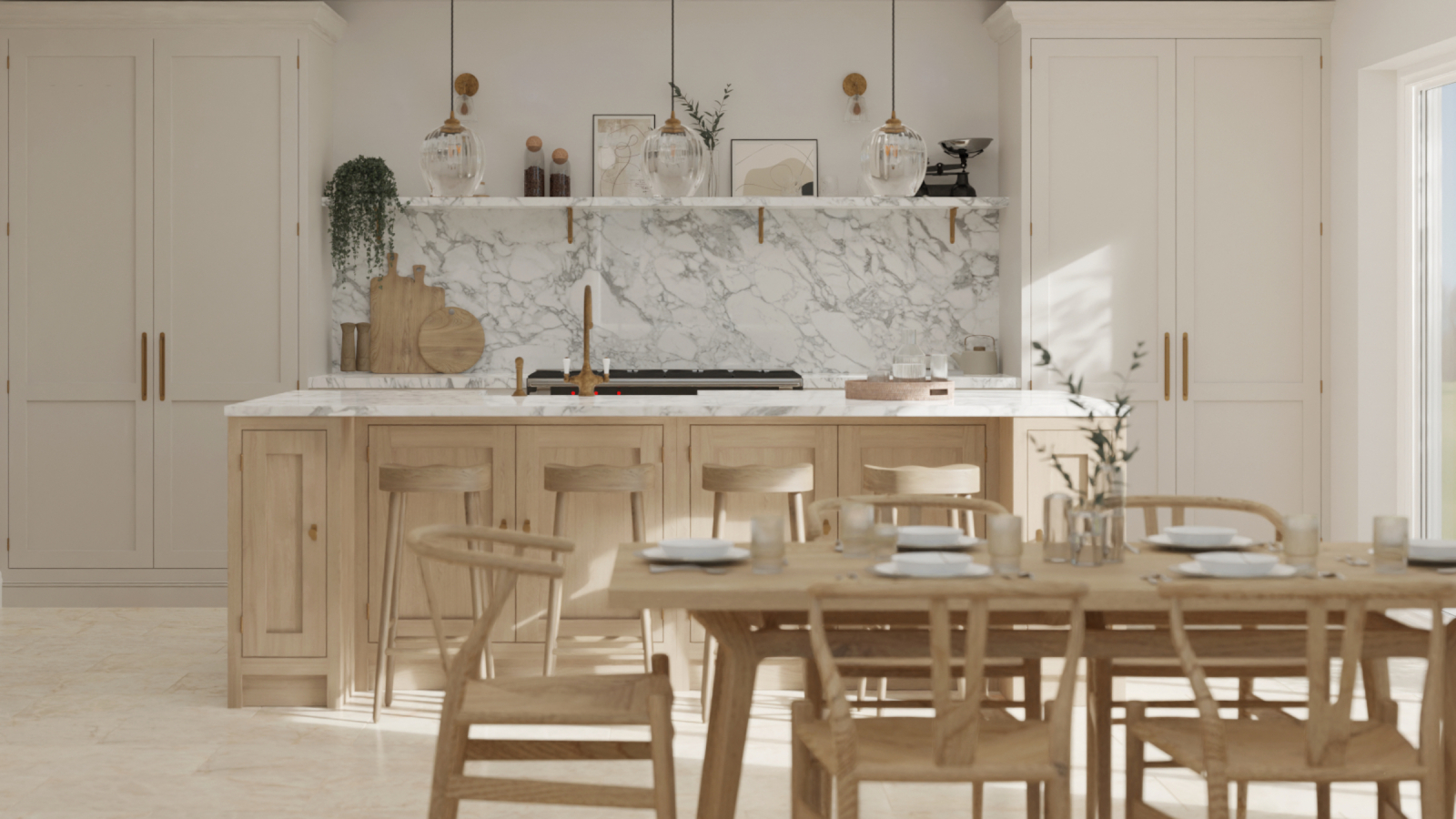
When it comes to kitchen design, a visit to a retailer's showroom will generally present you with a primarily fitted option. It's become the standard expectation for kitchens. But is there room in self build and renovation for a freestanding kitchen? Could it have benefits that outweigh a fitted approach?
We asked kitchen design experts for their thoughts on the freestanding vs fitted kitchen debate and it would appear the demand for one of them is on the rise...
Fitted kitchens
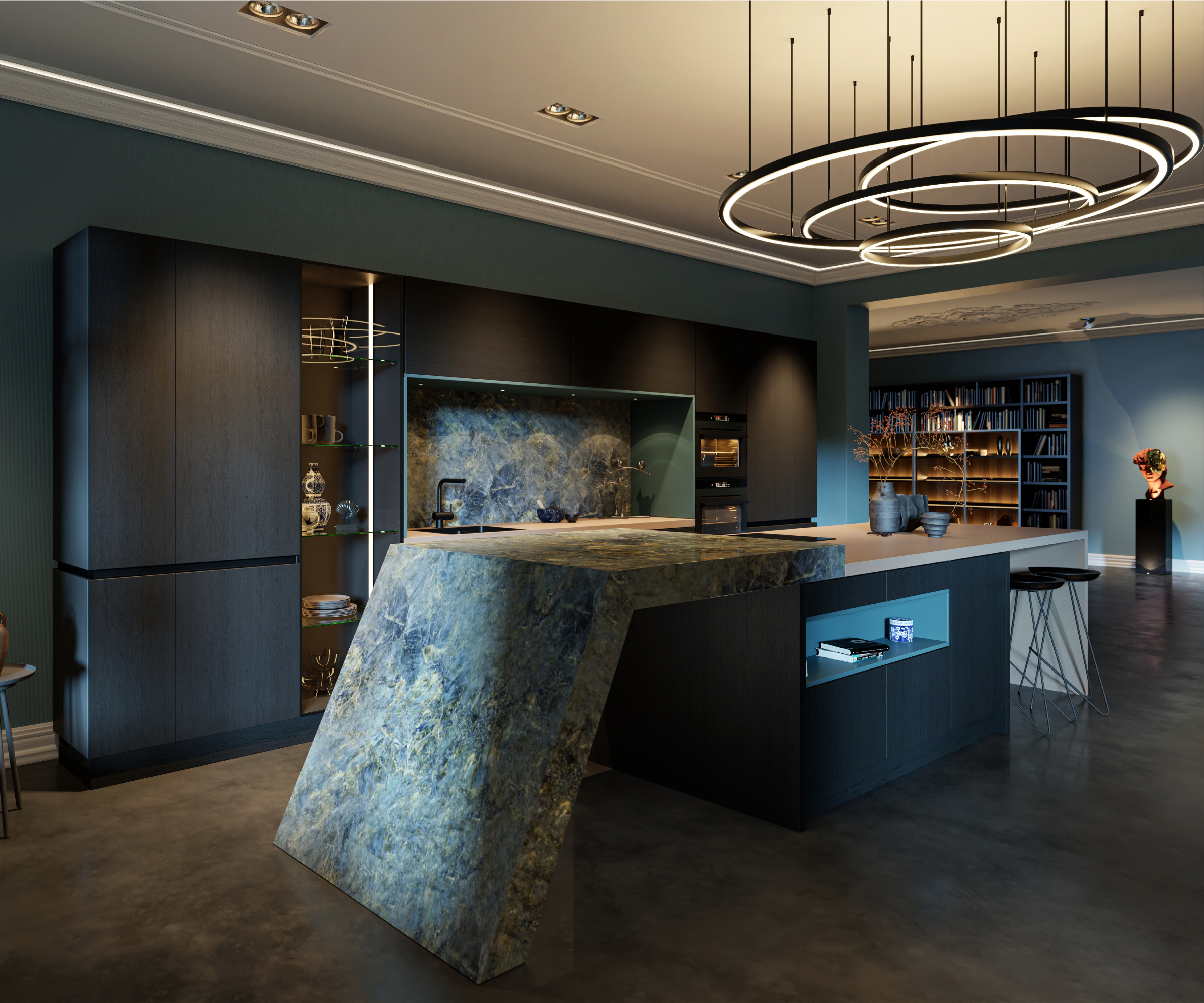
Fitted kitchen costs can suit every price bracket ranging from mass produced off-the-shelf versions to the ultimate in bespoke luxury. Fitted kitchens essentially do what they say on the tin, permanently fitting into a space and staying in situ.
Usually installed before final floor finishes are laid and decorating starts, it comprises a set of standard size carcasses mounted at floor and wall height to house cupboard space, drawers, appliances and essentials such as the kitchen sink.
Typically running along two to three walls in a variety of kitchen layouts including galley kitchens, L-shaped kitchens and sometimes comprising a kitchen island, there’s also options when it comes to appearance.
The pros of fitted kitchens
From shaker kitchen ideas to handless kitchens the options are endless. Fitted kitchens also provide the opportunity to use integrated appliances, thus hiding out of sight the vast range of white goods a kitchen requires.
Here are some of the other pros for fitted kitchens.
1. A fitted kitchen is customised
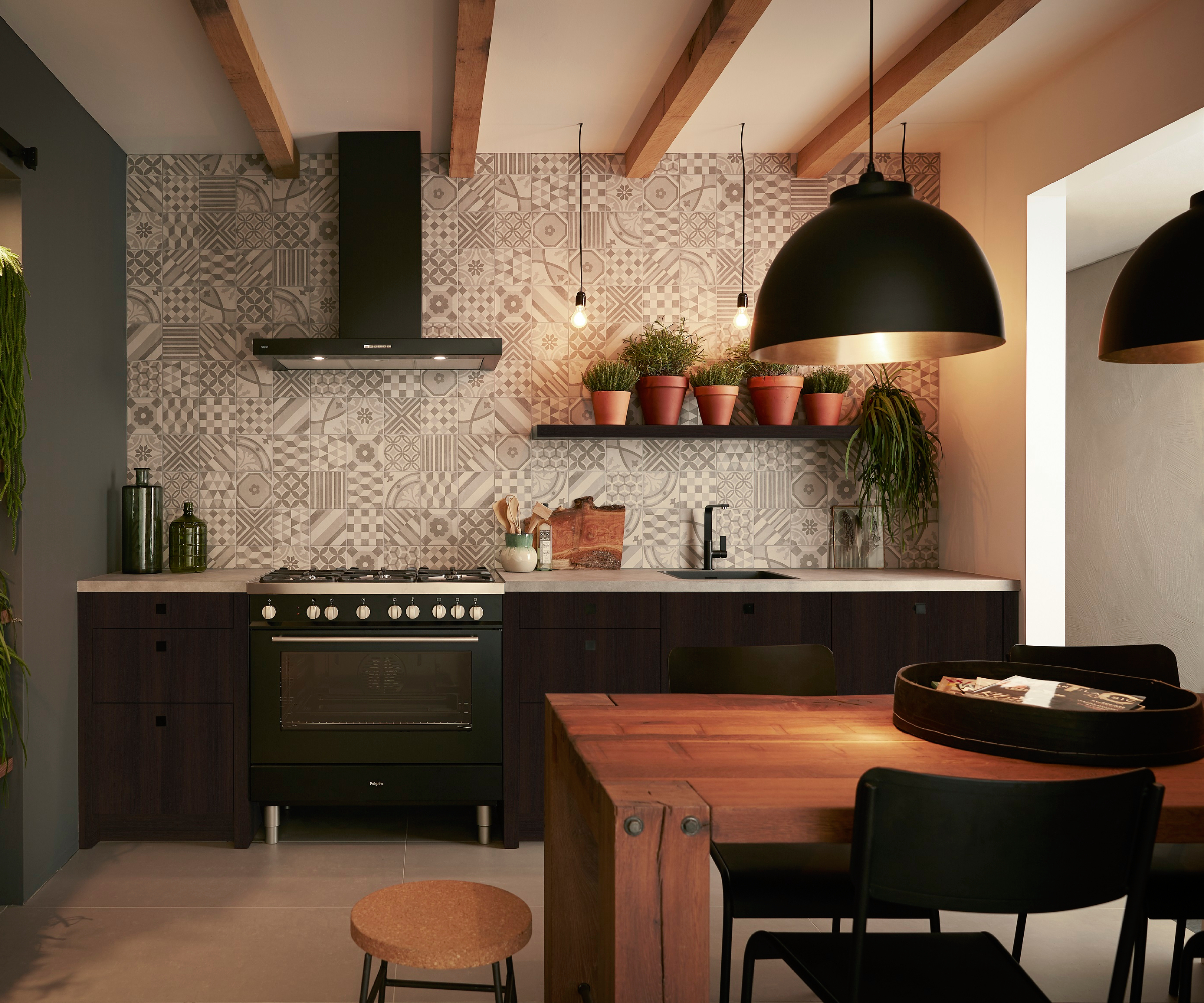
Although the word fitted suggests there’s less room for flexibility, Tim Spann, national sales manager for Keller Kitchens, says it’s the customisation opportunity that make fitted kitchens a better option.
“They maximise space and storage with workarounds on unusual shapes,” says Tim. “Purpose built kitchens are designed to suit your exact needs, lifestyle and circumstances and are customised as required.”
This small kitchen nook demonstrates how even tighter spaces can house fitted units, appliances and still look attractive while being functional.
2. Fitted kitchens are practical
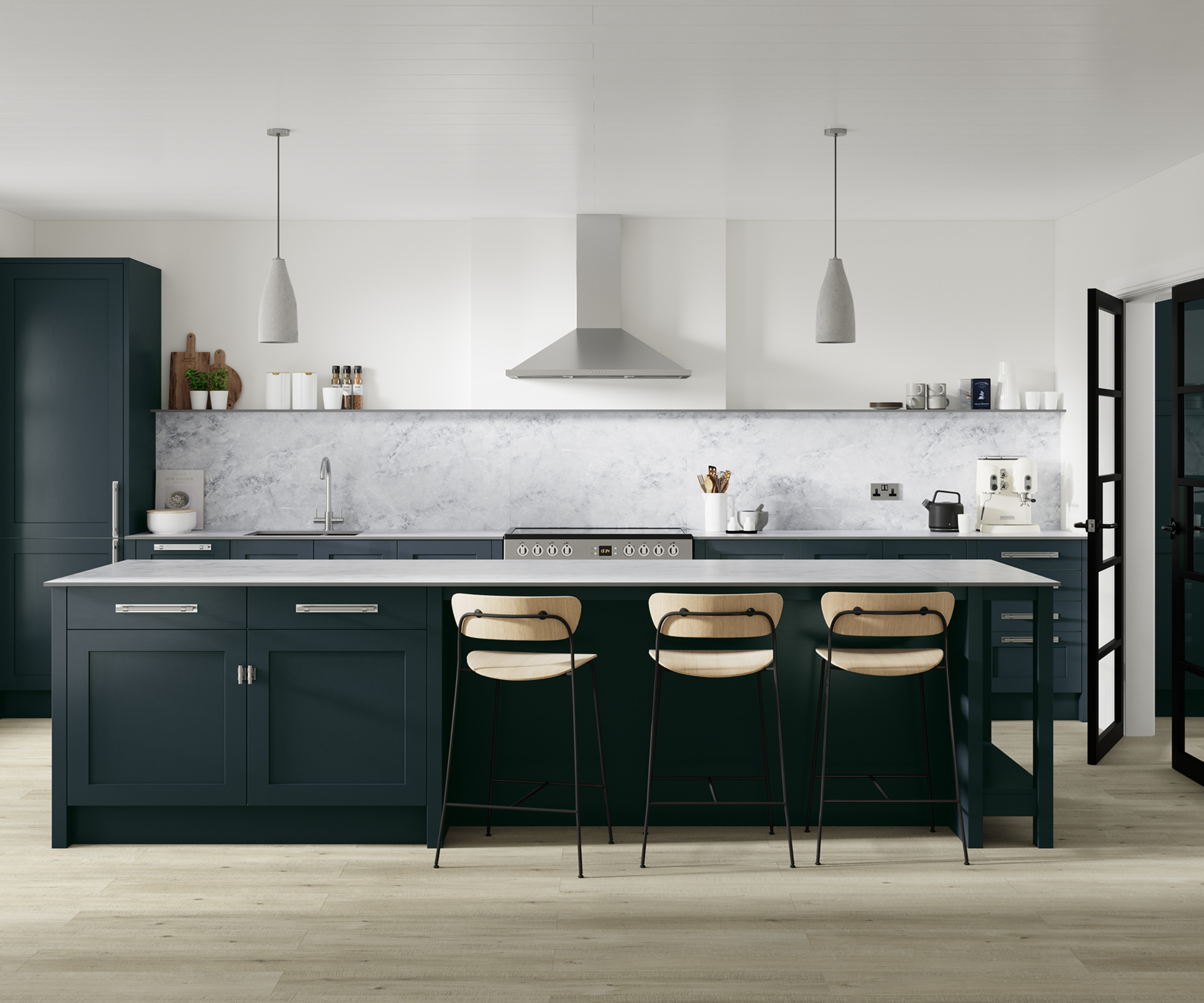
“A fitted kitchen is also more streamlined in terms of design aesthetics and in many ways functionality,” adds Tim, noting how they are also very easy to clean and maintain.
The other benefit? “You can hide all of the utilities such as water, electricity and gas,” says Time. “It’s also more robust as a fitted kitchen is fixed to the walls.”
Tricky corner? An experienced kitchen fitter will usually be able to deal with any idiosyncrasies of your kitchen walls and adapt a unit to suit.
3. A fitted kitchen is more ergonomic
Because fitted kitchens are usually designed by someone trained in making the most out of the available space, there's also a chance you'll end up with a finished product that works better for both you and your home.
"Always employ the services of a good kitchen designer that will walk you through the process and advise on aspects such as maximising the options in within your space, shape and budget," says Tim.
"Not only will they help you match your lifestyle needs and expectations, but also consider factors such as ergonomics which are a very important aspect of kitchen design and help you avoid unnecessary stretching and bending."
The cons of fitted kitchens
Of course, for every positive regarding fitted kitchens there are some downsides. Here we go through some of them.
1. Carcasses are often made with cheaper materials
Cost and quality tend go hand in hand. While basic high street kitchens may prove to be a good short-term solution, the materials used to manufacture them may not offer a great deal of longevity.
On the flip-side, if you do invest heavily in a luxury fitted kitchen, the fact it lasts for a longer time may eventually prove to be a negative if you fall out of love with the design. Trends change and what seems in style today, may not suit your aesthetics way before your kitchen units actually need replacing.
2. You can't easily change its layout
And of course, if you've chosen a cheap kitchen and are happy to consider short-term changes such as painted kitchen cabinet ideas, the fact the units are fitted to the wall still means limited choice in terms of layout. With most fitted kitchens secured to walls before flooring or tiling takes place, moving them can leave you with bare concrete floors and plastered walls.
Freestanding kitchens
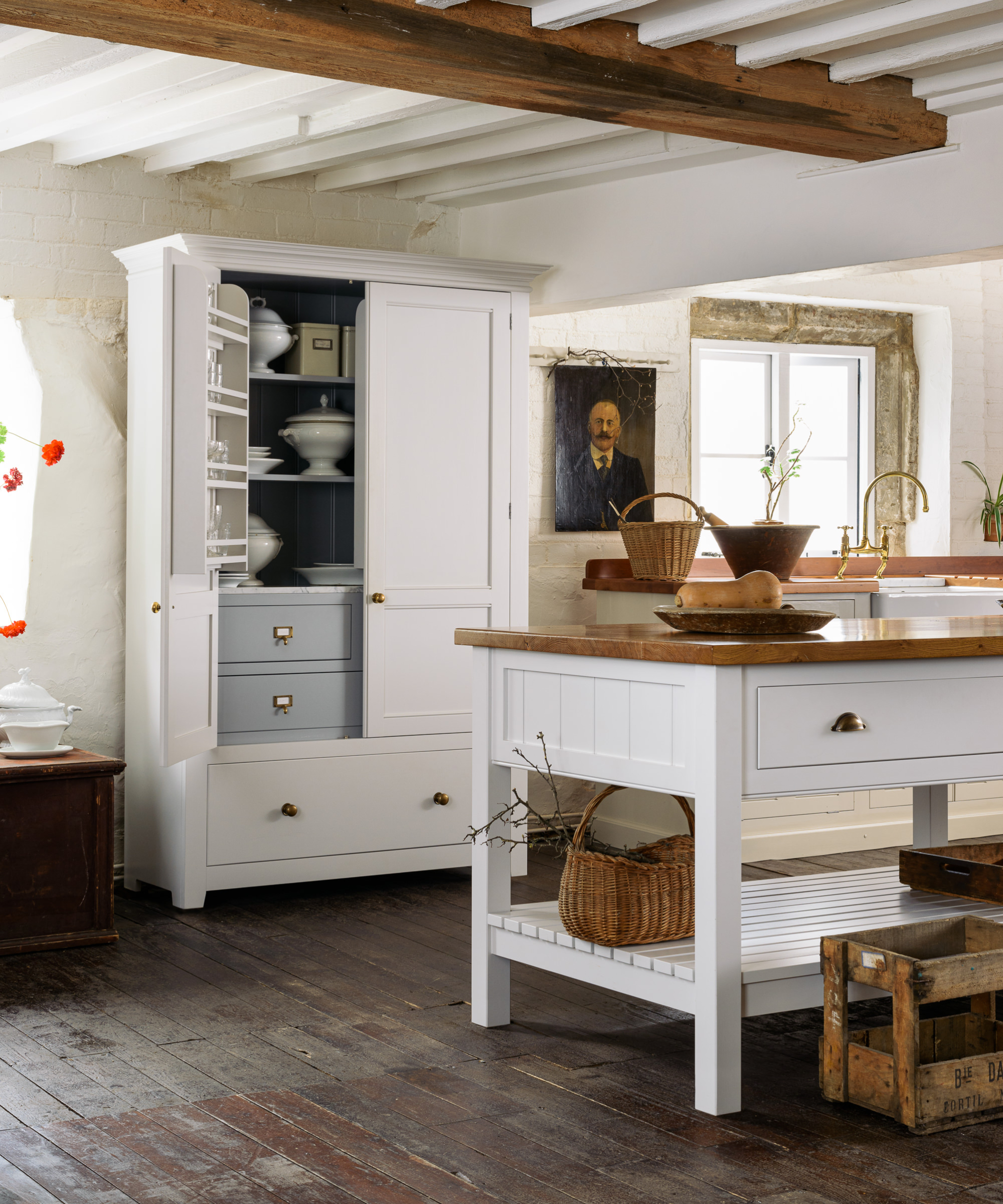
When it comes to freestanding kitchens, experts say it's less about creating a polished end product and more about bringing your own personal style to the heart of the home.
"The unfitted kitchen is more of a furnished room with appliances and kitchen items included than a generic kitchen," says Helen Parker, creative director at deVOL. "It has the beauty of feeling much more atmospheric and unique because it will inevitably have some different styles and materials."
A freestanding kitchen is a more "casual, uncontrived way of designing a kitchen," adds Helen, "a simple way of making your kitchen feel more an extension of the rest of the house rather than a completely different look."
The pros of freestanding kitchens
Usually considered an alternative and eclectic approach to kitchen design, a typical freestanding kitchen will see a mix and match approach to the style, shape and finish of units. Here we look at the pros of freestanding kitchens.
1. Freestanding offers freedom
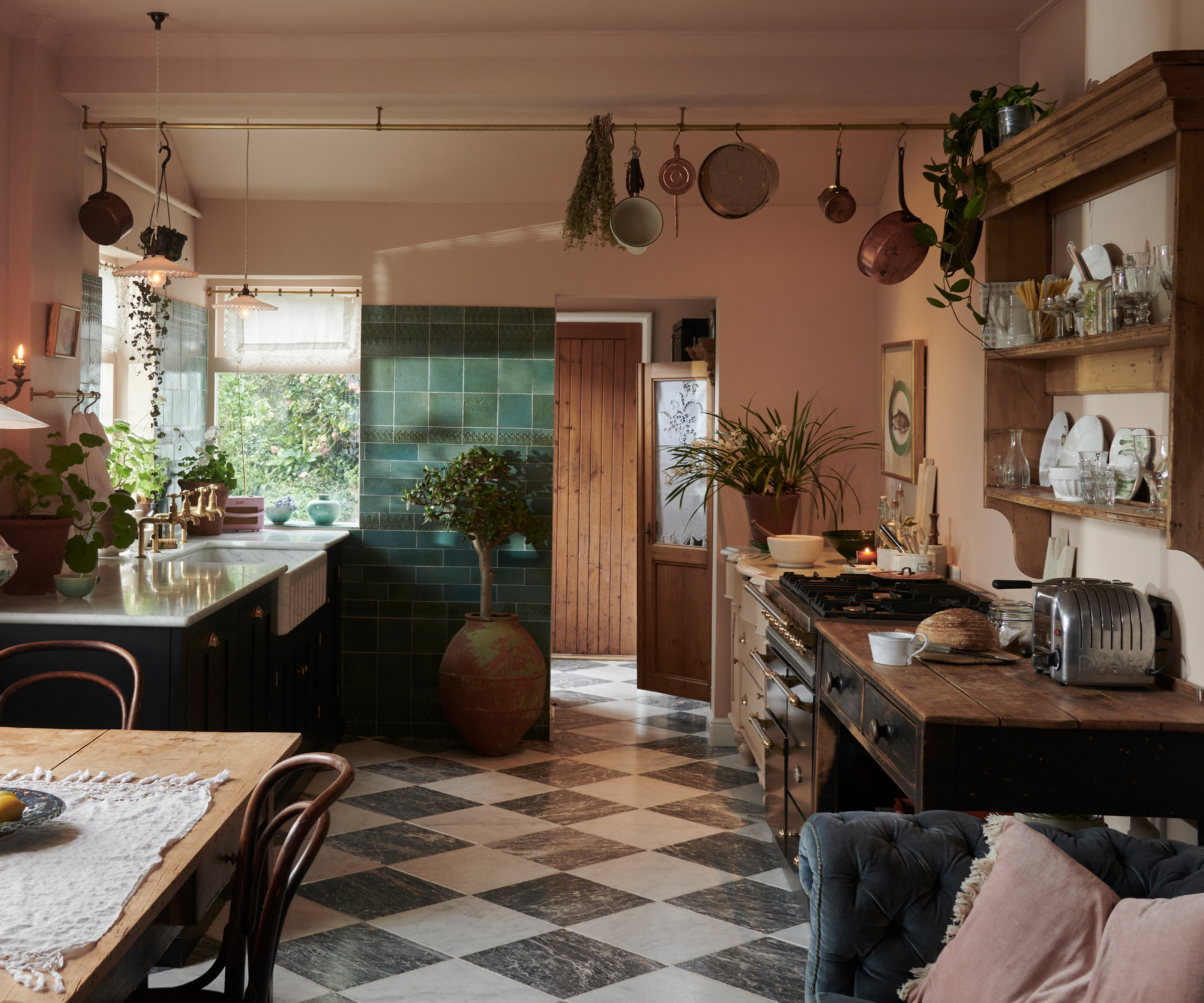
As the name suggests, freestanding kitchens are usually less about permanency and more about flexibility - both in terms of appearance and functionality.
More common in European kitchens where it’s considered standard procedure to take your kitchen with you, even in rented accommodation - a fact I can testify to having lived there and being asked to consider rental apartments devoid of kitchen fittings - freestanding kitchens, while once commonplace in the UK, were replaced from the 1950's onwards with the desire for a more permanent and streamlined kitchen.
It’s also not uncommon to see other types of furniture repurposed for use in this environment. As an example, think freestanding cupboards adapted to become sink or larder units.
2. Freestanding kitchens are growing in popularity
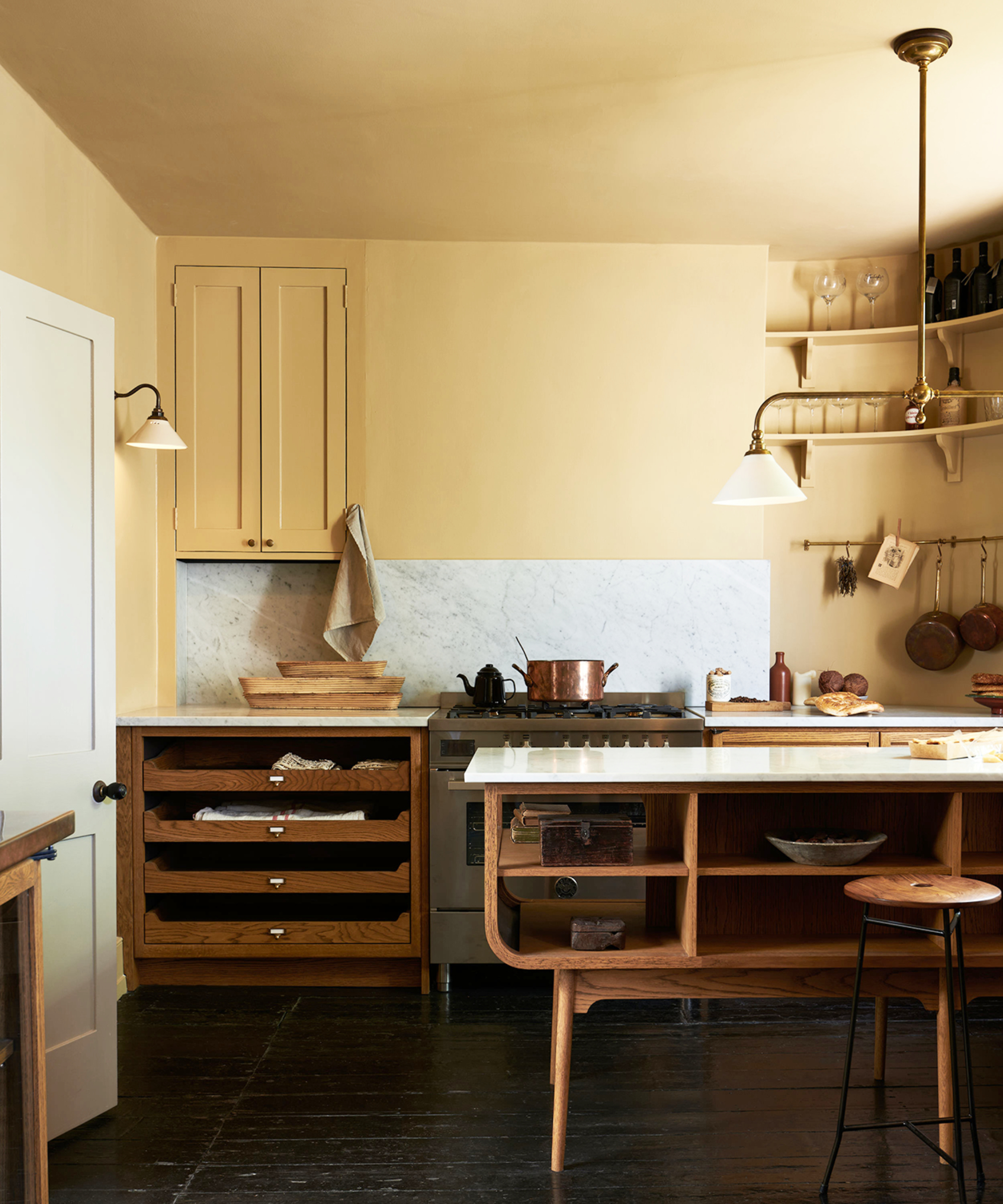
It's also a look that's on trend according to retailers.
Using research from Pinterest, homeware brand, Must Have Bins found searches for the term ‘eclectic kitchen décor’ soared a whopping 50% over a two-year period.
In the post-pandemic world, it's a trend seen across interiors in general, and one that's also been influenced by hybrid working where kitchens, once just a home hub now also have to serve as an office. Freestanding items provide an extra level of freedom to your kitchen layout ideas.
3. Freestanding can be more eco-friendly
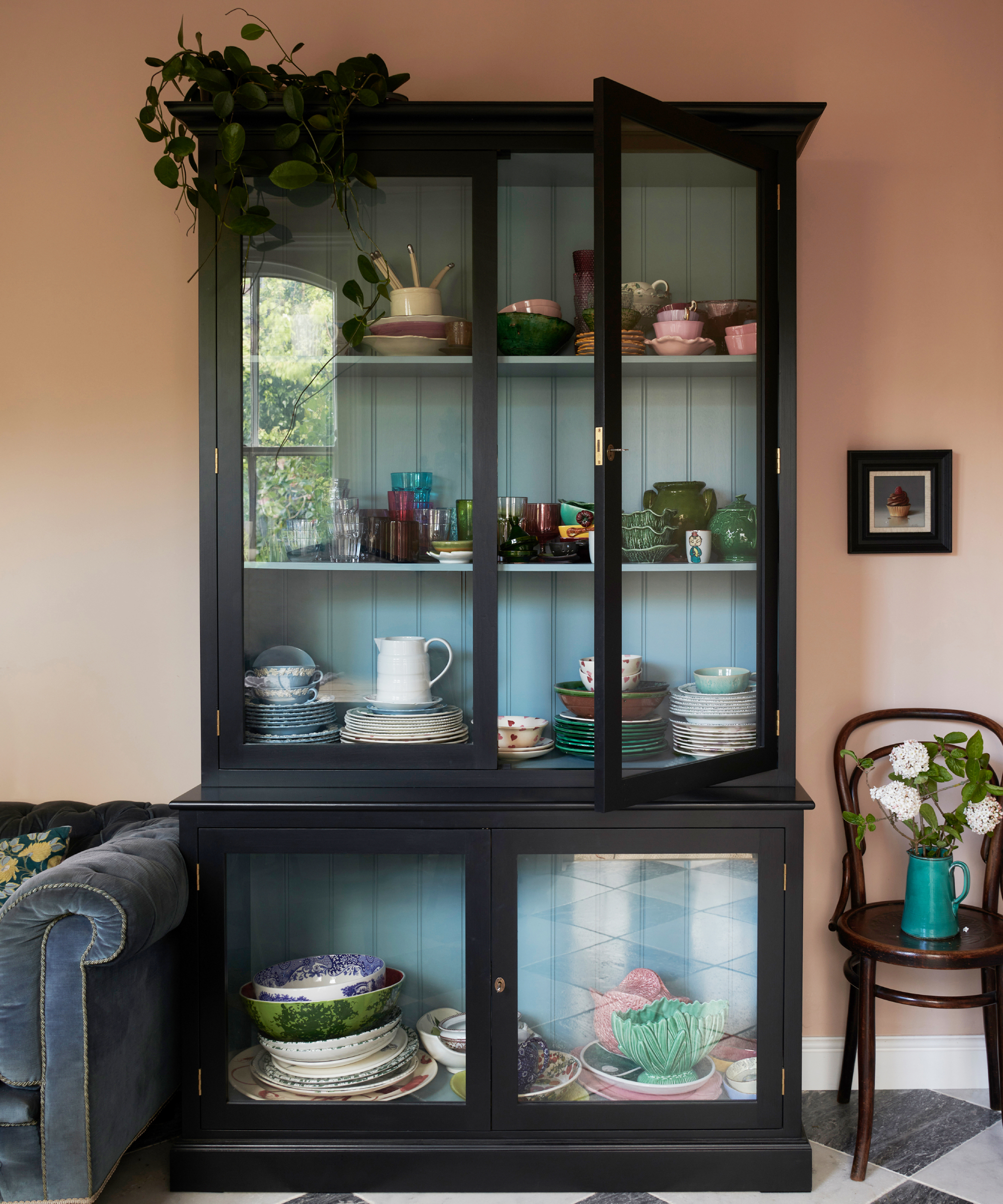
If sustainable kitchen ideas are top of your wish list, then a freestanding kitchen may be the best choice. Sourcing vintage furniture such as dressers, cupboards and tables and giving them a new lease of life is a great way of creating a freestanding design.
"You can add vintage cupboards, you can change things around and you can swap and reuse cupboards in different ways, giving you flexibility," says Helen. "Something which is not possible in a brand new fitted kitchen."
No time to scour salvage stores or spend hours sourcing vintage furniture online? Brands such as deVOL have founded their brands on this very look.
"We sell vintage products to allow our customers to be able to get the whole look," says Helen, "making the notion of years of collected treasures and family heirlooms to create a kitchen more easily done without the tireless research and sourcing."
4. Freestanding can be more cost-effective
When it comes to cost, then there's no doubt that searching for freestanding items can leave you looking at a similar pricing scale to fitted kitchens. Purchase a bespoke piece of freestanding kitchen furniture and you will leave with your wallet decidedly lighter - understandably so as you are usually paying for handmade craftsmanship that will stand the test of time.
But, there's also the other side of the coin where with some upcycling skills and a good eye for design, you can find bargain items in charity shops or online marketplaces that you can truly customise to be your own.
Creating a kitchen from freestanding units can also save money if you move to a new home, or perhaps have to rent while your new home is built.
"Freestanding elements allow you to swap and change the look and feel of the kitchen while also giving you the freedom to move pieces as you move homes," says Al Barr, founder of Olive & Barr.
5. Freestanding units can be storage havens
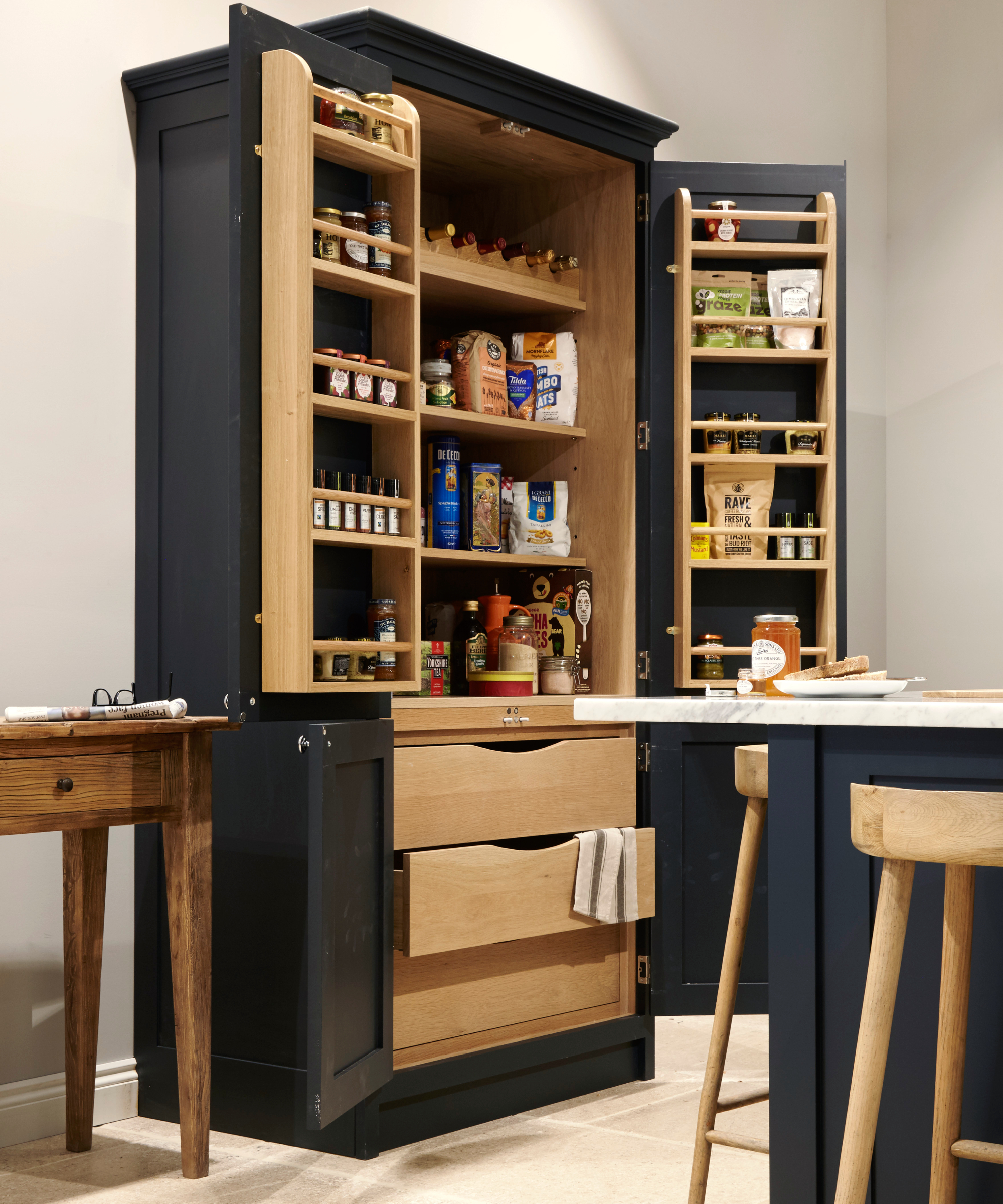
Although clever storage options ranging from pull out corner storage trays to double drawer units and dividers are one of the benefits of a fitted kitchen, if you are buying a bespoke piece of kitchen furniture, you'll likely still benefit from the designer's expertise.
"Freestanding larder units can encompass it all," says Al. "From storing your dry food, and harbouring electrical goods, to the full tea station with a hot tap, it's no surprise it has become the must-have of any kitchen."
6. Freestanding suits non-standard sizes
“Freestanding kitchen elements can also play a key part in delivering a well-designed kitchen, as sometimes standard sizes of cabinetry won’t suffice," says Al.
And although this will either involve you developing some clever DIY skills to adapt vintage finds, or paying for bespoke items to be built, it does give you the opportunity to invest in cabinetry which meets all your requirements.
Equally, "it challenges you to consider what you do and don’t need from your new kitchen," says Al. Whether it's a freestanding cabinet or open shelves, not being restricted to a one size fits all approach can unleash a more creative approach to your kitchen design.
The cons of freestanding kitchens
For lovers of modern kitchen designs or purists who prefer their kitchen to be uncompromisingly sleek, polished and jam-packed with clever, hidden storage solutions it's likely a fitted kitchen will better fulfill these needs.
1. Finishes are difficult to match
Freestanding kitchens, even when bespoke, still embrace a less uniformed approach to design, embracing details, quirky qualities and non-matching finishes.
And for all their portability benefits, this could create a problem if you want to move and they don't suit your new space. You could find the new homeowners asking you to remove items that you have to sell as you don't have anywhere for them to go.
2. Often can be more expensive
Bespoke items, whilst beautiful, can also increase the cost of a kitchen and are perhaps harder to budget for if you aren't using a standard kitchen layout planner or sizes.
3. Can be tricky hiding pipework and plumbing
From a purely practical point, there's also the issue of hiding pipework, drainage, cables and all the necessary fittings that sinks, washing machines and other appliances call for. Some items need to have an element of fitting in order to make your kitchen safe and secure. It's unlikely you will be able to have an entirely freestanding kitchen.
FAQs
Can you combine the best of both types of kitchen?
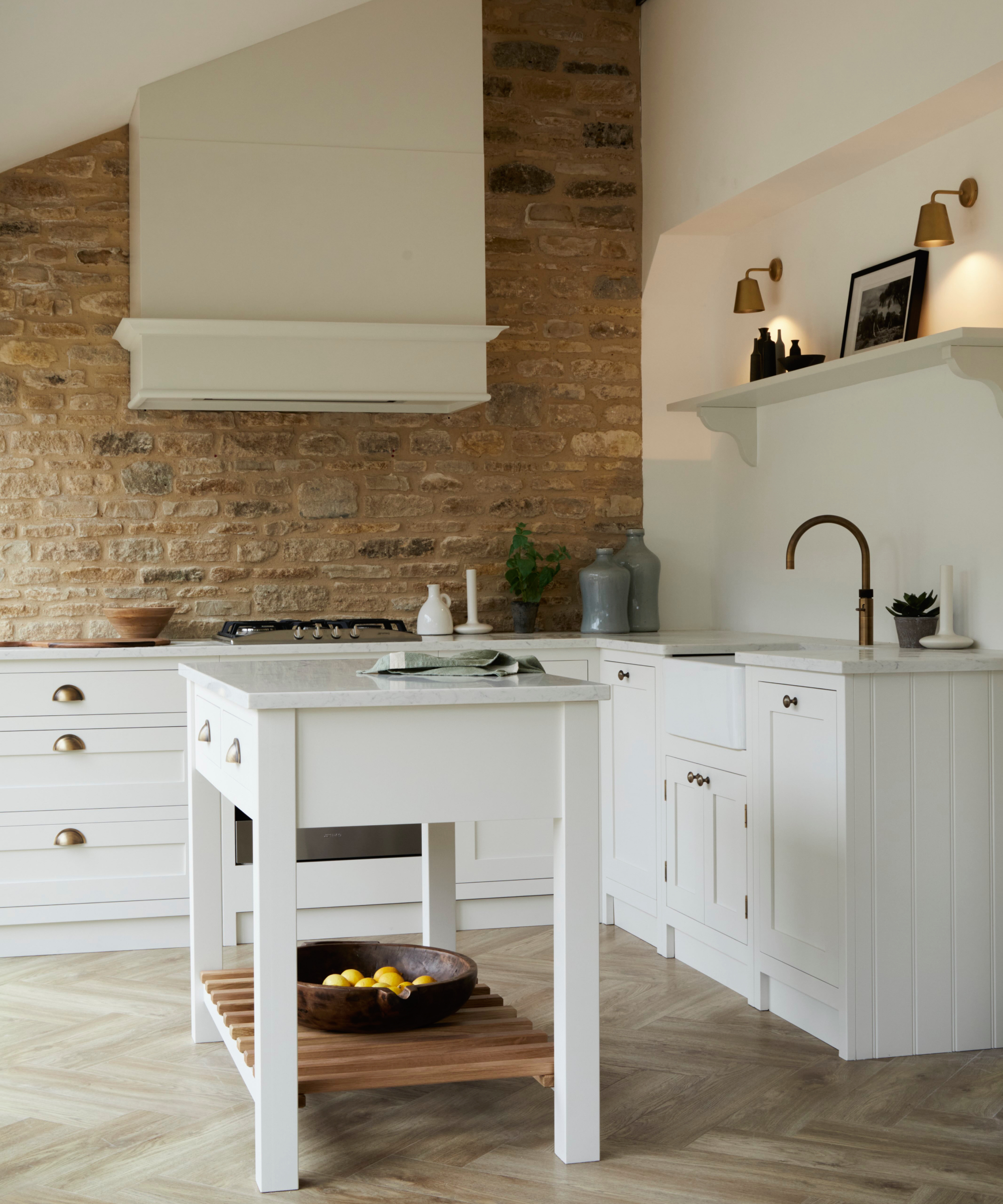
The good news is, whether the heart of your home truly needs to be a multifunctional room, you're considering kitchen diner ideas or perhaps only have a small kitchen space, combining the best of both is not only feasible, but a great approach to creating a unique kitchen environment.
“While fitted kitchens are unlikely to ever go out of style, the request for freestanding pieces is on the rise," says Al. "For example, rather than kitchen islands, we're seeing an uptake in bakers tables - similar to a kitchen island, but on legs.
"This freestanding piece makes the island feel like a piece of furniture while still having all of the benefits of a usual island with deep drawers and a place to perch.
"Versatile, portable, and free of electricity and plumbing, a freestanding island can be easily positioned around the kitchen to suit the task at hand."
And with the option to design a bespoke table, they are particularly good in small kitchens, says Al who tells us that "by introducing key pieces which are designed especially for your needs, you won’t feel short-changed by the smaller proportions of your kitchen."
So whether you choose to add a freestanding island, incorporate a fitted pantry unit alongside your portable butcher's table or transform a beautiful dresser into a permanent store for your crockery, the key to a great kitchen seems to be combining an element of both so that the space truly works for you.
Which adds more value?
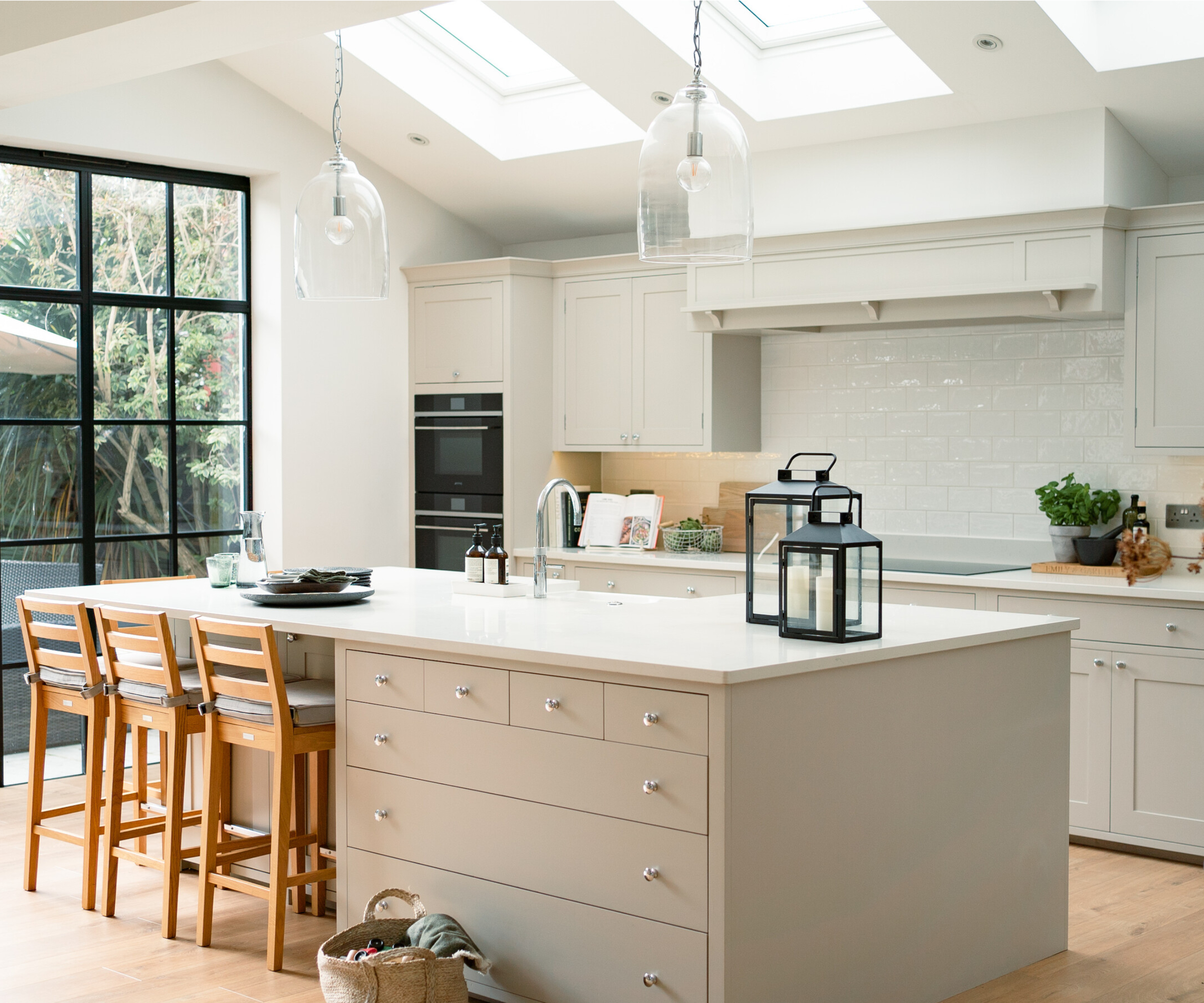
"A fitted kitchen adds more value to the home given it is fully integral and customised to the space," says Tim. "A good, well-designed kitchen can sell a home - hence often being called the heart of the home.
"But, many things are possible with both methods of fit, or combining the two," he agrees.
The reality is, that even though 89% of experts surveyed said they felt a new kitchen adds extra value to your home, it's also seen as one of the things most home buyers will eventually change.
Unless you are renovating to sell, what's more important is to make good decisions at the start of the design process to ensure you stay in love with your kitchen for as long as you can.
It's kinder to your wallet and the environment to not change your kitchen too often. It's a big expense and often results in a mountain of materials that can't be recycled and end up in landfill.
Would my space suit a fitted or freestanding kitchen?
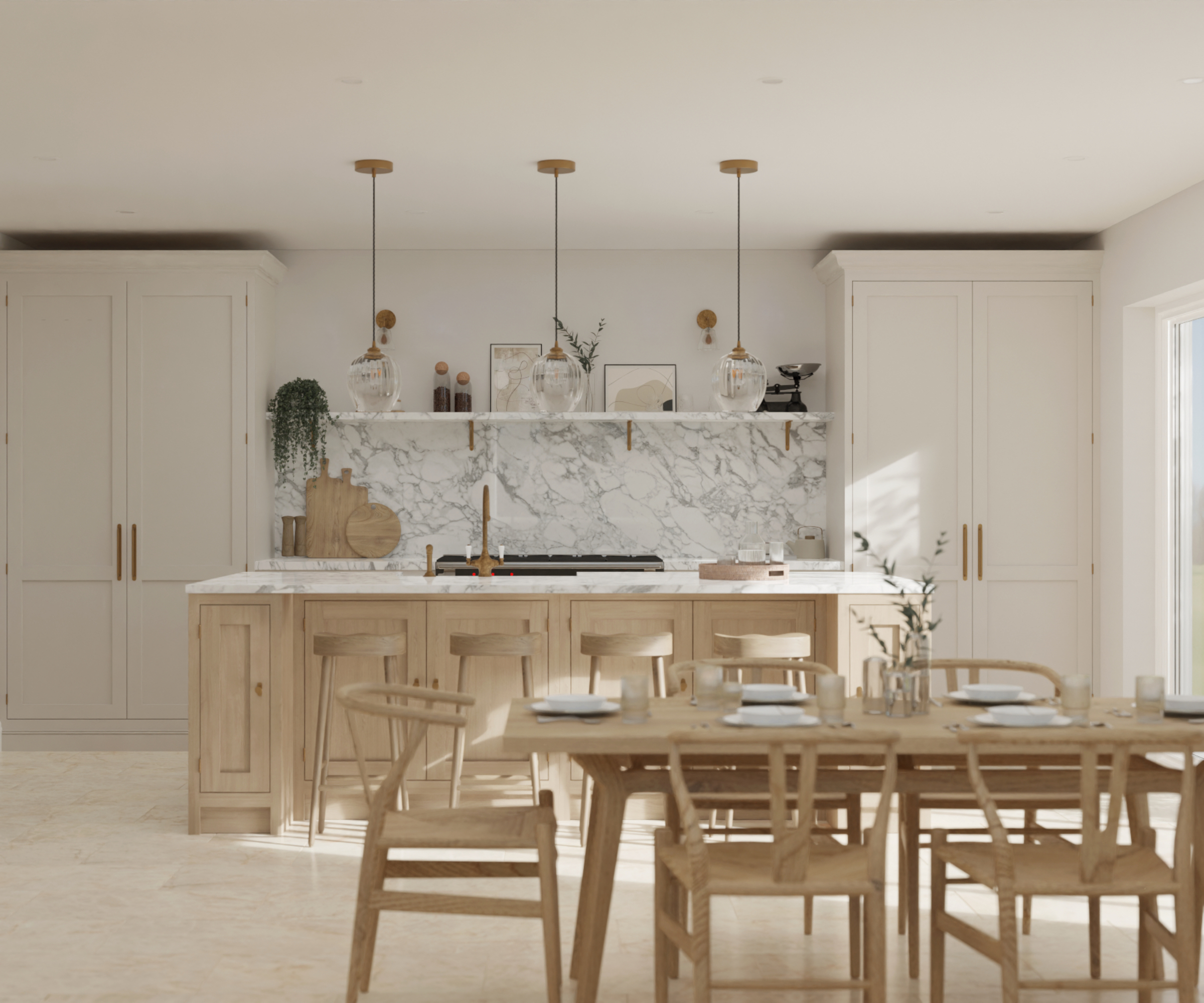
Whether you choose fitted, freestanding, or a combination of both, there are a number of measures you can take to ensure your kitchen stands the test of time and provides you with both a practical and stylish solution.
“Trends come and go, whereas timeless looks are exactly that; timeless," says Al. "A neutral colour palette, whether that’s creams and greys or dark blues paired with wooden countertops have the broadest appeal and therefore will continue to remain popular for years to come.
"Not only this, but neutral cabinetry is extremely versatile and will complement a variety of different design styles, allowing the space to easily be re-worked to suit a variety of different personalities.
Al also advices choosing high-quality appliances where possible as they will add a premium feel to your space. If you're looking to follow a trend, make it a technological one he says.
"From dual-purpose taps that provide hot, cold, and boiling water on demand to smart fridge-freezers with intuitive controls, by installing the latest appliances you will create an ergonomic kitchen that will not only make your life easier but if you choose to sell, attract potential buyers too."
Also key to your kitchen design, regardless of whether it's fitted or freestanding is the choice of materials and ensuring you have enough storage.
Al suggests that for worktops, "choosing to upgrade to a hardwearing natural stone, like quartz will help to future-proof your space. Resistant to stains, heat and scratches, quartz not only looks good but it’s perfect for busy lifestyles and those who enjoy entertaining. For an added touch of luxury, opt for a premium quartz such as Venatino.
It's also important to remember freestanding kitchens can benefit from easy storage tricks. "To store utensils and make use of otherwise wasted space," says Al, "install magnetic strips between your wall and base cabinets. Or, add a spice rack to the back of your cabinet door and use storage baskets and containers to utilise both under-sink and cupboard storage."
Whether you opt for an eclectic freestanding approach or choose to embrace the seamless finish of a fitted kitchen, it's also important to consider your lighting. "The right lighting will allow you to highlight the best features in your kitchen, whilst enhancing functionality too," says Al.
Read our guide on how to light a kitchen to find out making your kitchen lighting work for you.
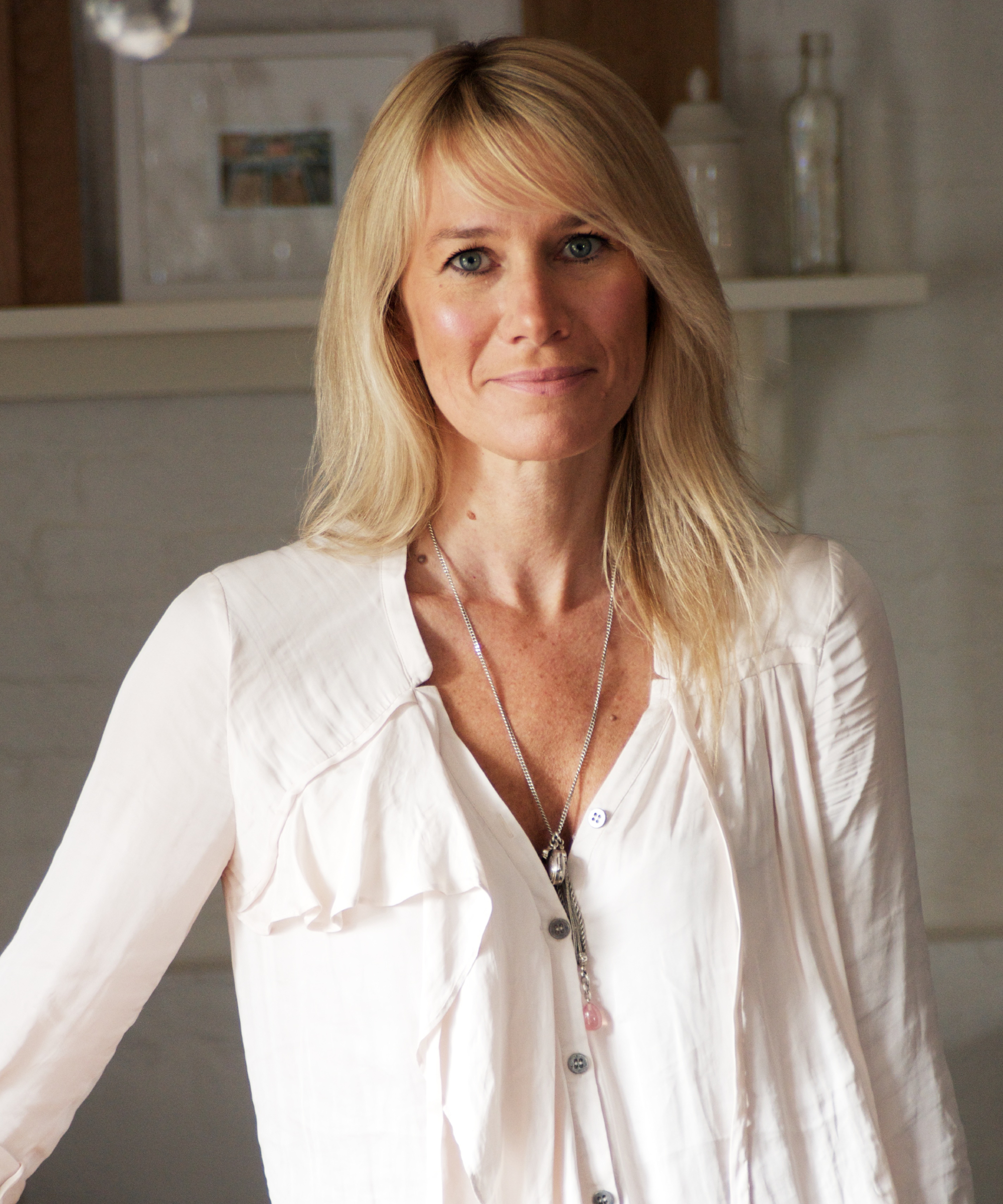
Helen Parker is deVOL's Creative Director. Joining in 2004 as a kitchen designer, by 2011 she had become responsible for deVOL's style, creating one-of-a-kind showrooms, sourcing antiques and gifts and designing new pieces of furniture and accessories. Over the years, she has developed deVOL's look and voice. Recently, Helen has been busy helping to produce and starring in deVOL's Emmy nominated TV series. Helen's passion and desire to create a special look for deVOL has proved to be the making of this company.
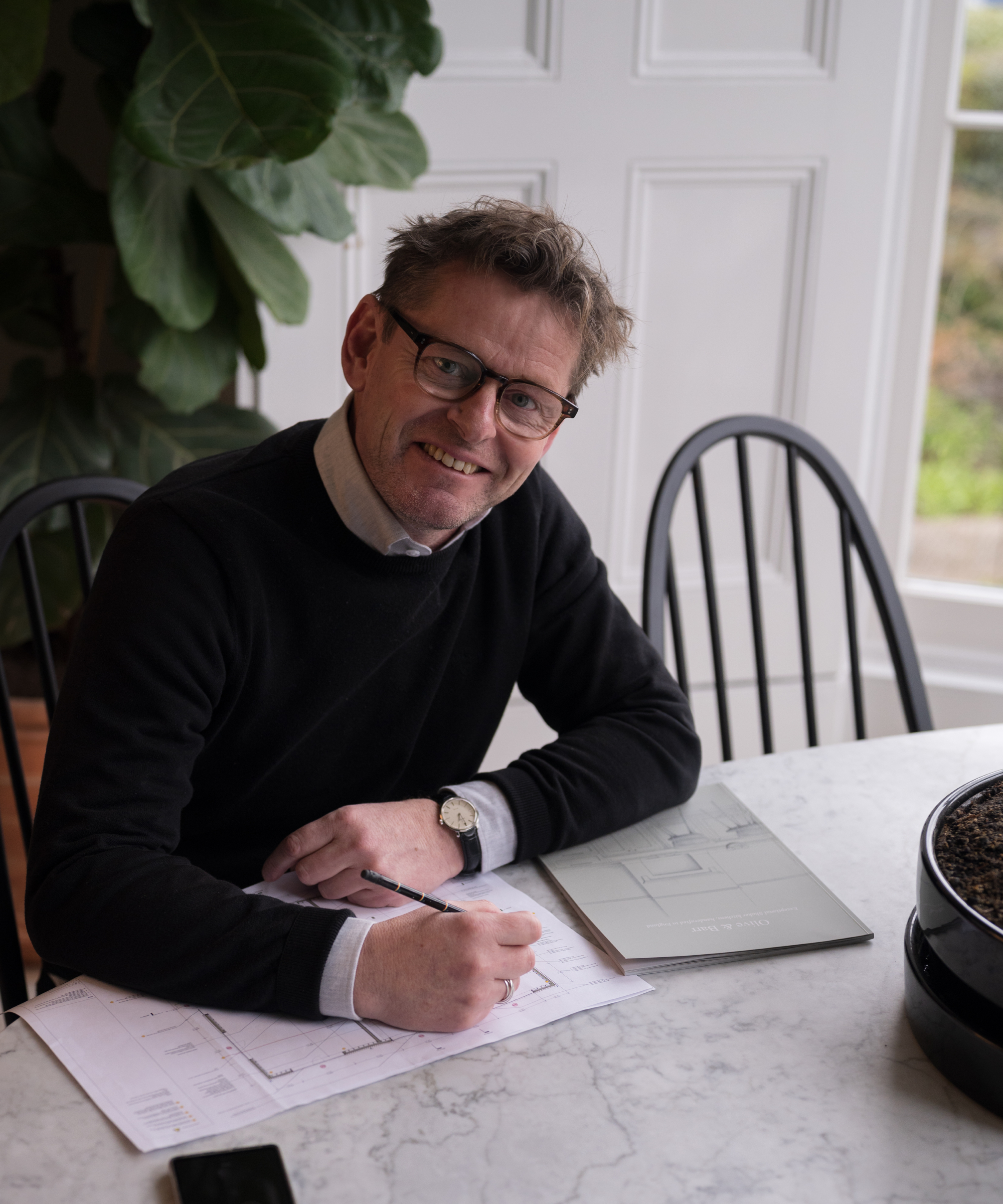
Founder Al Bruce began his illustrious career 25 years ago studying to be a cabinet maker at college. From humble beginnings, his natural skill in the craft of cabinetry and keen business acumen saw him quickly rise up through the ranks of the handmade kitchen industry, gaining invaluable experience and a wealth of knowledge along the way.
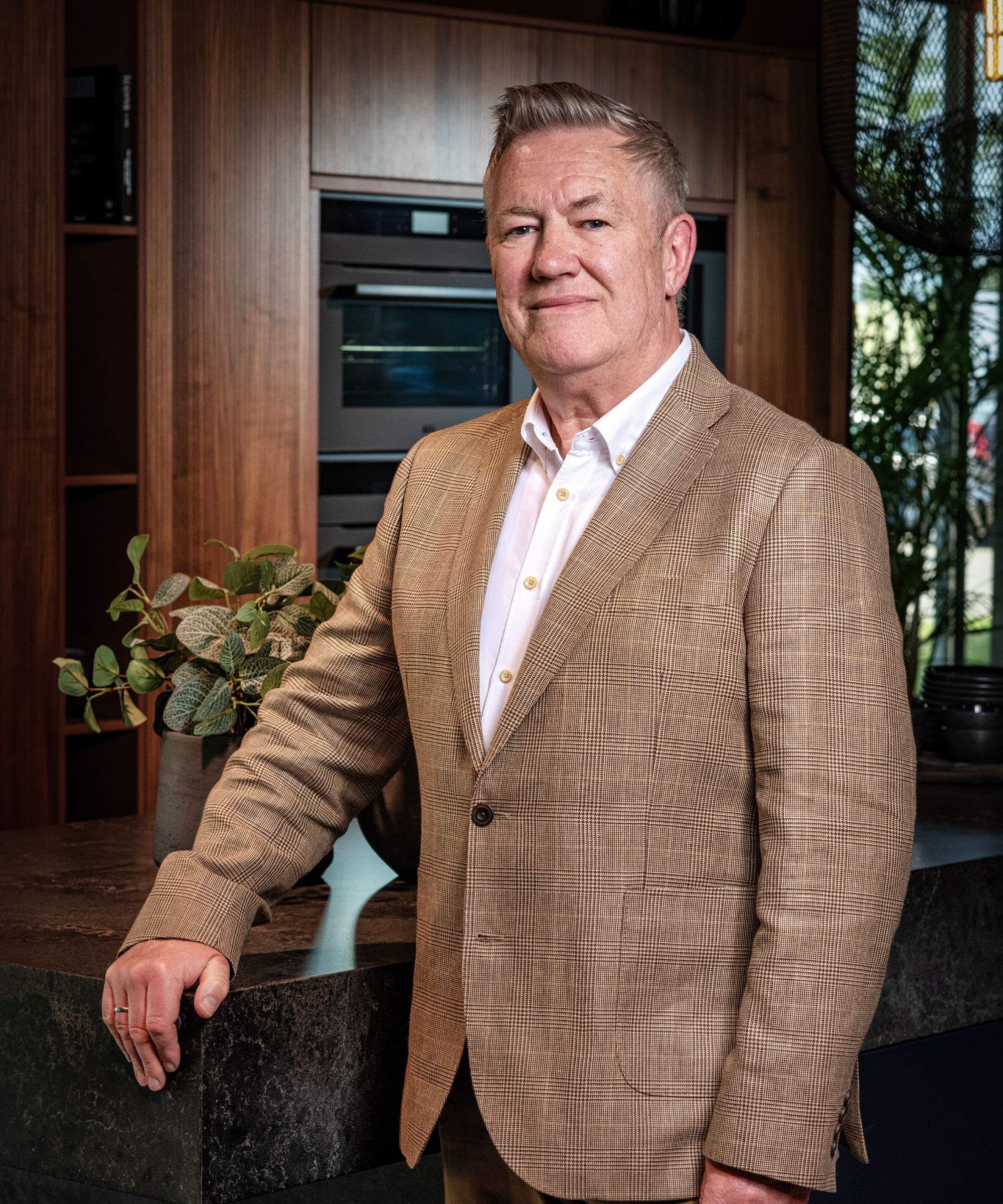
Tim Spann has almost 30 years’ experience in the kitchen industry. Having started life as a graphic designer, Tim spent several years working for advertising and branding agencies where much of his work centred around the kitchen sector. Through natural progression, Tim chose to jump ship to work in-house for some of the industry’s largest kitchen and appliance manufacturers, and now spends most of his time promoting Keller’s sustainability vision and achievements to independent retailers and the contract market in the UK.
Get the Homebuilding & Renovating Newsletter
Bring your dream home to life with expert advice, how to guides and design inspiration. Sign up for our newsletter and get two free tickets to a Homebuilding & Renovating Show near you.

Sarah is Homebuilding & Renovating’s Assistant Editor and joined the team in 2024. An established homes and interiors writer, Sarah has renovated and extended a number of properties, including a listing building and renovation project that featured on Grand Designs. Although she said she would never buy a listed property again, she has recently purchased a Grade II listed apartment. As it had already been professionally renovated, she has instead set her sights on tackling some changes to improve the building’s energy efficiency, as well as adding some personal touches to the interior.
